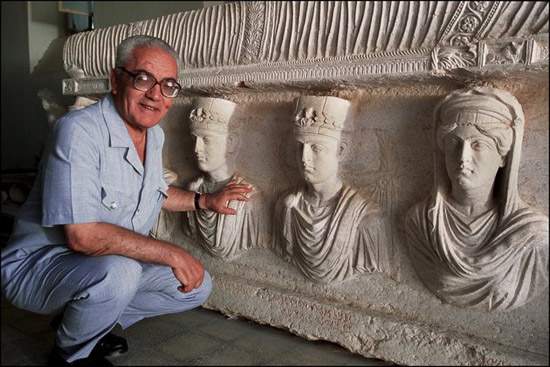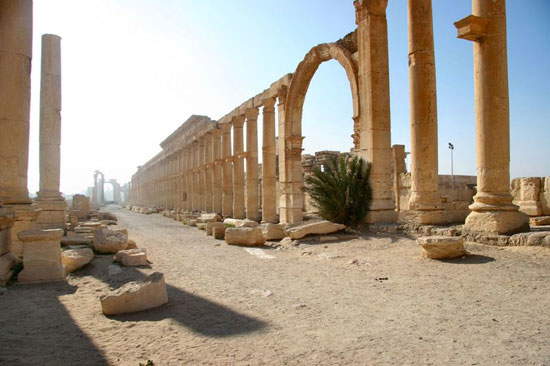When, last August 21, we had proposed our article to pay tribute to the memory of Khaled Asaad, the archaeologist who had been the director of the Palmyra excavations and who just in August was barbarically murdered by Isis, we had left off promising that we would publish a passage from one of his articles. It has been a little longer than we had proposed, but today we can finally present the passage to you. The search was not easy: because among Khaled Asaad’s vast scholarly output, we had to find an article that was not overly technical, and that could also be easily understood by a wide audience. The choice therefore fell on this passage, which discusses the materials with which Palmyra was built (and with which his sculptures were made), and which is taken from the article Restoration work at Palmyra, which appeared in 1995 in the journal ARAM, published by the Aram Society for Syro-Mesopotamian Studies. The original article can be obtained from the publisher’s website, Peeters Publishers. We take this opportunity to say that since we have not been able to get in touch with the publisher to obtain permission for the translation, we are at his complete disposal to fulfill any kind of obligation. Happy reading.
 |
| Khaled Asaad |
The Palmyrians mainly used limestone for their city buildings. This stone is abundant locally and can be quarried nearby. The ancient quarries are north of Palmyra: unfinished columns and other blocks are found there; the stone was cut into rough shapes before being transported to places where it ended up becoming part of architecture or sculpture. However, some column bases and sarcophagi were also used without ever being completed.
These quarries provided hard limestone, the main variety of stone used in Palmyra. It is white or yellowish, with red or brown hues. [ ]
A light, yellow limestone, less durable but easier to work, was also very common, especially in ancient periods(ndt: yellow stone was widely used in Palmyrene sculpture between the first century B.C. and the early first century A.D.). It was mostly used in the form of freestone blocks, especially for interiors of funerary towers and for lining the walls of underground tombs. [ ]
The light white limestone, known locally as kuthan, is chalky and very easy to work. Because this absorbs a lot of moisture and rain, it was mainly used for foundations. [ ]
Finally, sandy limestone, quarried on the slopes of the Valley of the Tombs, is very hard and resistant to weathering and erosion, but it is not suitable for polishing for sculptural decoration.
Some tomb towers are built entirely of this stone, and most have foundations made of it. [ ]
From time to time, fragments of marble columns and statues are also found. They are usually believed to have been imported, but recently a possible marble quarry was discovered about 20 km south of Palmyra. However, the few marble statues that remain are of fine white Greek marble: we are talking about the Athena from the temple of Allat, a torso of Aphrodite, and an imperial torso from the Severan period. [ ] Imported granite is known in two varieties [ ]. Other building materials include unbaked brick. Although it is not found very often in excavations, it is obvious that most house walls were built with sun-dried bricks attached to a stone base that still stands. [ ]
Bronze clamps were used to join freestone blocks of important buildings, such as temples, the Agora, or the columns of the Great Colonnade.[...] Less elaborate structures, such as funerary towers, show abundant use of plaster, gypsum-based, between the stones. [ ] A mixture of lime and ash was often used for house floors, particularly in later periods when these floors could be painted red.
 |
| The decumamus maximus of Palmyra. Credit |
Warning: the translation into English of the original Italian article was created using automatic tools. We undertake to review all articles, but we do not guarantee the total absence of inaccuracies in the translation due to the program. You can find the original by clicking on the ITA button. If you find any mistake,please contact us.